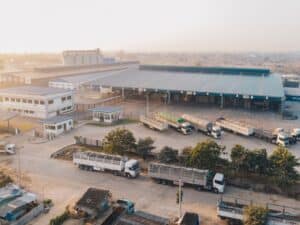Business
Why Industrial Buildings Need Air Circuit Breakers
In the fast-paced and intensely competitive world of industrial facilities, electrical failures can be more than catastrophic. They cause downtime, equipment damage, and missed opportunities.

Industrial buildings rely on electrical circuits to prevent such risks, but an outdated or inefficient breaker can cause numerous problems. This is where air circuit breakers (ACBs) come in. Here’s a short guide explaining the mechanism of air circuit breakers and why industrial facilities need them:
What is an Air Circuit Breaker Anyway?
First things first, what is an air circuit breaker? It is an electrical safety device that automatically disrupts current during an overload or short circuit to protect electrical circuits and equipment.
Look at it this way: An oil circuit breaker uses oil to insulate and cool the arc. This is effective, but it can pose fire or explosion risks. In comparison, an air circuit breaker uses compressed air to extinguish the electrical arc when contacts separate. This is why they are more effective for low and medium-voltage applications — the ones found in industrial and commercial power distribution systems.
Benefits of ACBs for Industrial Facilities
The benefits of an air circuit breaker for industrial buildings include:
Increased safety
As hinted earlier, air circuit breakers use air as the arc-quenching medium. This reduces the risk of explosion and oil leaks. As a result, an air circuit breaker will create a safer environment for personnel in an industrial facility.
High breaking capacity
ACBs are designed to handle large fault currents and interrupt them very quickly. This makes them ideal for heavy machinery and high electrical loads found in industrial settings.
Easy mechanism
ACBs don’t have an overly complex working mechanism. They are equipped with protective relays that sense abnormal current levels. Once the fault is detected, the trip coil is activated, causing the breaker to open.
Then, an electric arc forms between the contacts. The arc is cooled and extinguished using arc chutes and blowout mechanisms, ensuring rapid disconnection.
The best part? An air circuit breaker is safely isolated, preventing damage to connected equipment. Once the fault is cleared, the breaker can be reset manually or automatically.
Remote operation and automation
Modern ACBs are equipped with electronic trip units that allow for remote monitoring and control. This will improve the efficiency of industrial operations and ensure better resource management.
Reduced downtime
ACBs resolve a high surge current quickly. This will minimise the duration of power interruptions, reducing costly downtime for industrial functions.
Types of Air Circuit Breakers Best for Industrial Use
Air circuit breakers come in various configurations suitable for industrial applications and equipment. Here are some types:
Plain break ACB – it uses simple arc chutes to extinguish the arc. It is suitable for low-power applications.
Magnetic blowout ACB – it uses magnetic fields to stretch the arc, and is suitable for higher current ratings.
Cross-blast ACB – it directs a high-speed air blast across the arc to distinguish it. A cross-blast ACB is ideal for heavy-duty industrial appliances.





